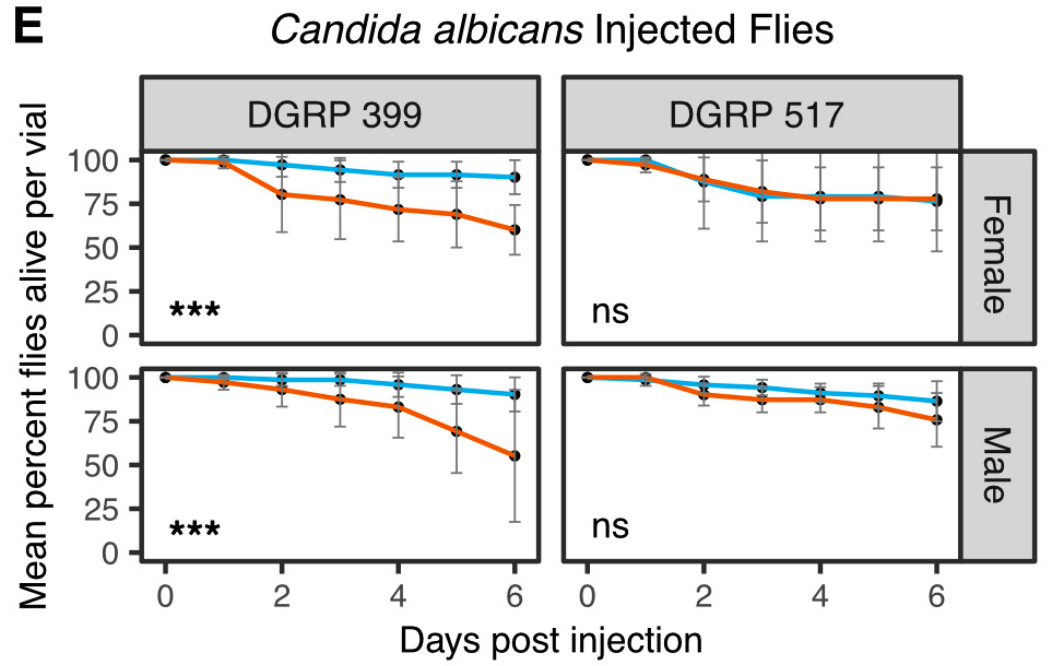Abstract
Galbut virus (family Partitiviridae) infects Drosophila melanogaster and can be transmitted vertically from infected mothers or infected fathers with near perfect efficiency. This form of super-Mendelian inheritance should drive infection to 100% prevalence, and indeed, galbut virus is ubiquitous in wild D. melanogaster populations. However, on average, only about 60% of individual flies are infected. One possible explanation for this is that a subset of flies are resistant to infection. Although galbut virus-infected flies appear healthy, infection may be sufficiently costly to drive selection for resistant hosts, thereby decreasing overall prevalence. To test this hypothesis, we quantified a variety of fitness-related traits in galbut virus-infected flies from two lines from the Drosophila Genetic Reference Panel (DGRP). Galbut virus-infected flies had no difference in average lifespan and total offspring production compared to their uninfected counterparts. Galbut virus-infected DGRP-517 flies pupated and eclosed faster than their uninfected counterparts. Some galbut virus-infected flies exhibited altered sensitivity to viral, bacterial, and fungal pathogens. The microbiome composition of flies was not measurably perturbed by galbut virus infection. Differences in phenotype attributable to galbut virus infection varied as a function of fly sex and DGRP strain, and differences attributable to infection status were dwarfed by larger differences attributable to strain and sex. Thus, galbut virus infection does produce measurable phenotypic changes, with changes being minor, offsetting, and possibly net-negative.
